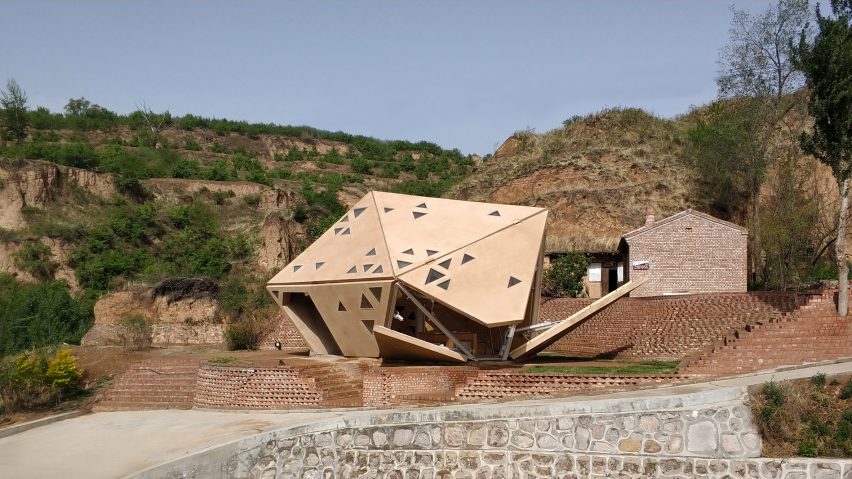
Operable Interactive Village Hut opens and closes depending on the temperature
A system of hydraulics opens and closes three panels of this visitor centre in Xiahuayuan Village, China, depending on the temperature outside.
Designed by a team from the Tsinghua University School of Architecture led by professor Weiguo Xu, the Operable Interactive Village Hut has walls that will close when the temperature drops below 16 degrees Celsius or rises above 29 degrees.
The system simultaneously triggers either a heating coil system or air conditioning.
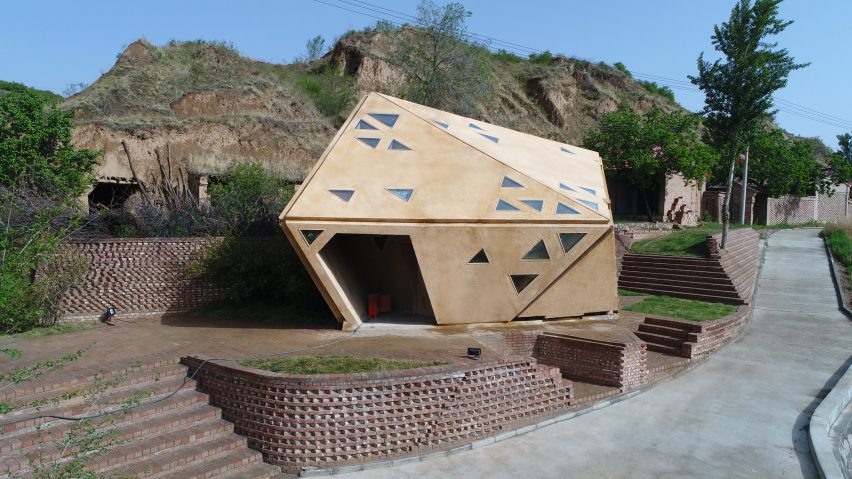
With its shallow mountain hills and gentle loess slopes popular with tourists, Xiahuayuan village is now actively preparing for the influx of tourism that will come with the 2022 Winter Olympics in Beijing.
With its faceted rock-like form, the hut is designed to echo the rough shapes of the nearby mountains.
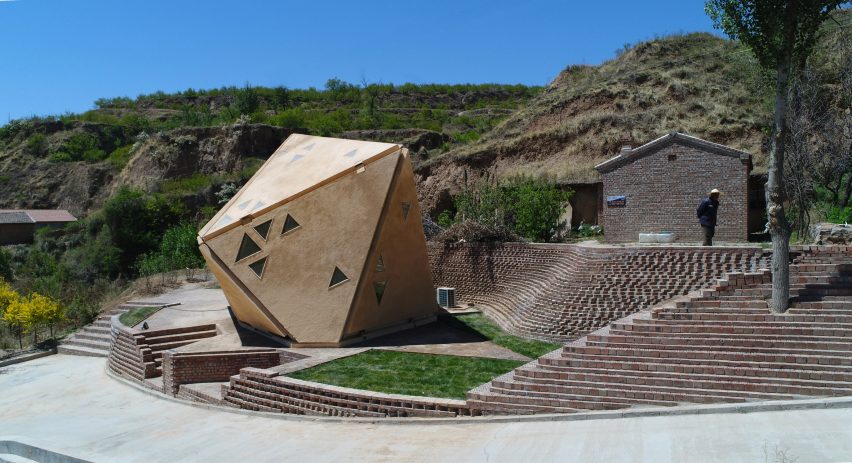
"Being both a reception centre and a souvenir sales room, the hut can also function as a performing stage during festivals or large-scale events," explained the architecture school.
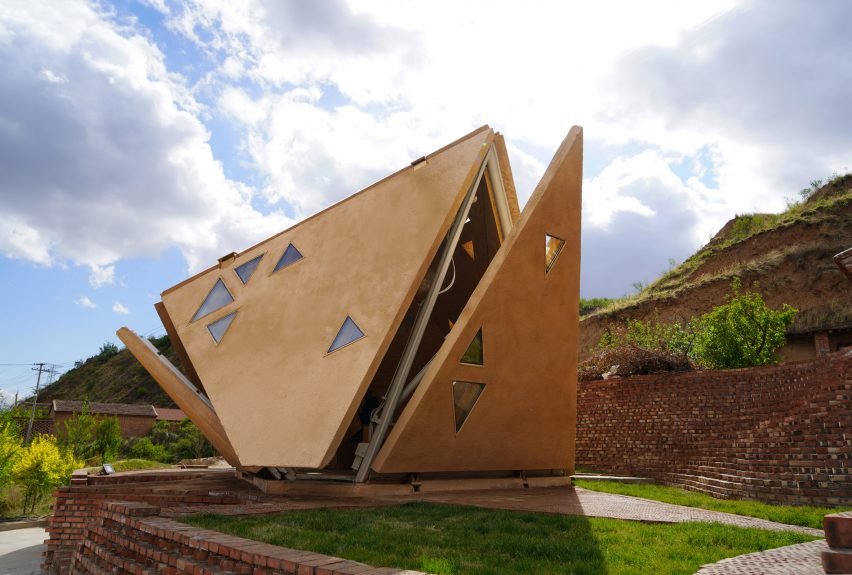
Operable Interactive Village Hut comprises 16 prefabricated glass reinforced concrete panels attached to a steel-pipe frame.
The rough, earthy appearance of the exterior was created by covering the panels with a cladding of rammed earth and grass, a material common to the village and one that further helps it to blend in with the surrounding hills.
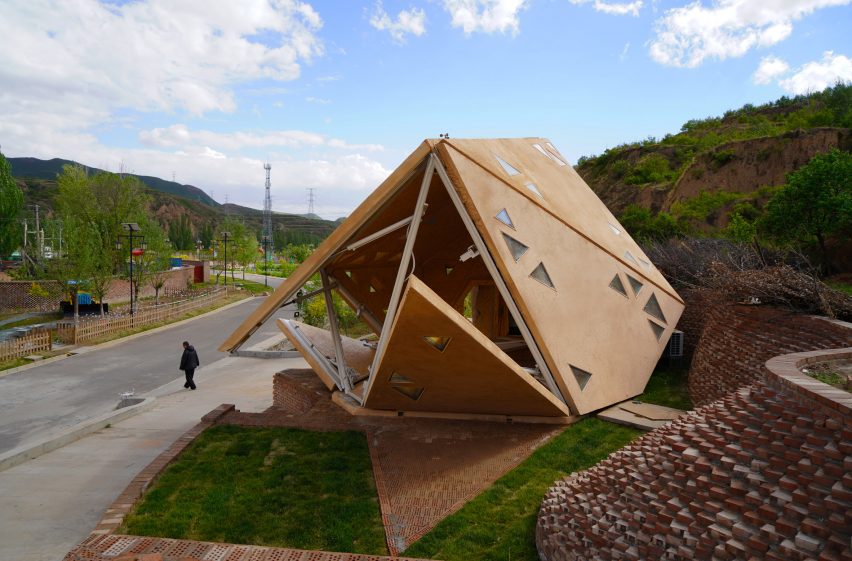
The hut sits on a small podium of local red bricks, which continue up the shallow slope adjacent to the structure to create what the architects describe as a "natural auditorium" to be used when the hut is in its open state.
Inside, panels of wood composite reflect the irregular form of the exterior, and a series of small triangular openings help to bring in light when the hut is completely closed.
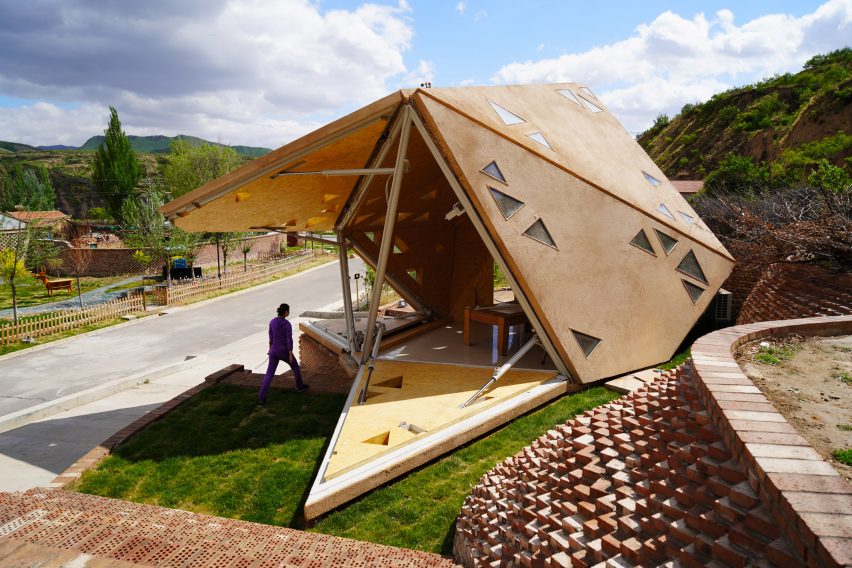
The project team see this project as a prototype for a new way of building that can be more responsive to the environment.
"To truly realise ecological design, it is necessary to combine existing technologies and create a new building system", said the architecture school.
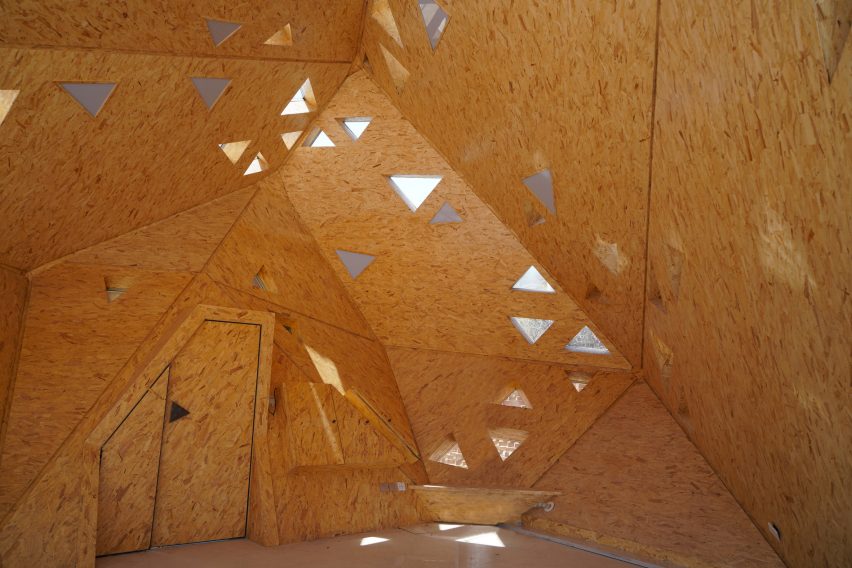
Several architects are exploring the potential of dynamic materials and buildings to improve environmental performance.
Last year Manuel Herz Architects completed an apartment block with walls that unfolded to create balconies and sun shading, and in CF Møller designed a quilted greenhouse that inflates to change light and temperature conditions.
Photography is by Tsinghua University School of Architecture.
Project credits:
Architect: Weiguo Xu
Design team: Weiguo Xu, Dong Han, Yuan Gao, Jie Zuo, Yanzhen Ji, Yuqian Li, Jie Liu